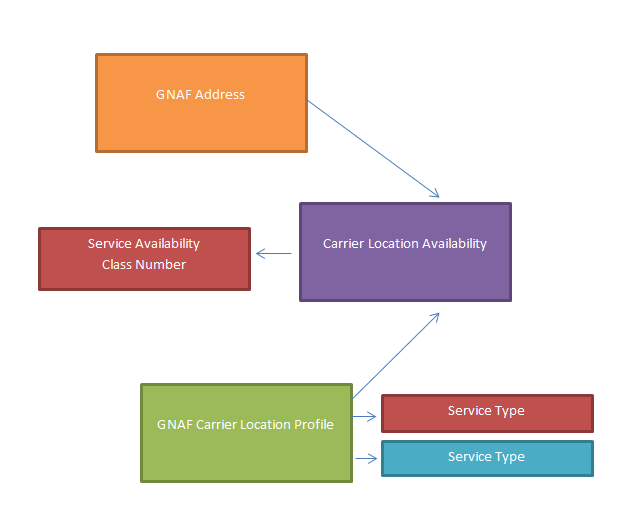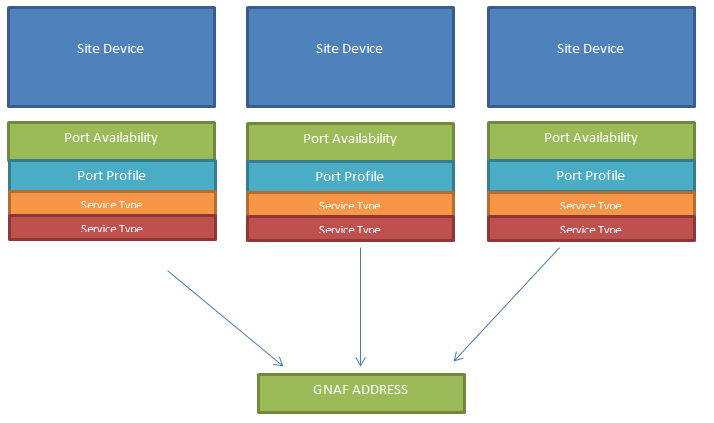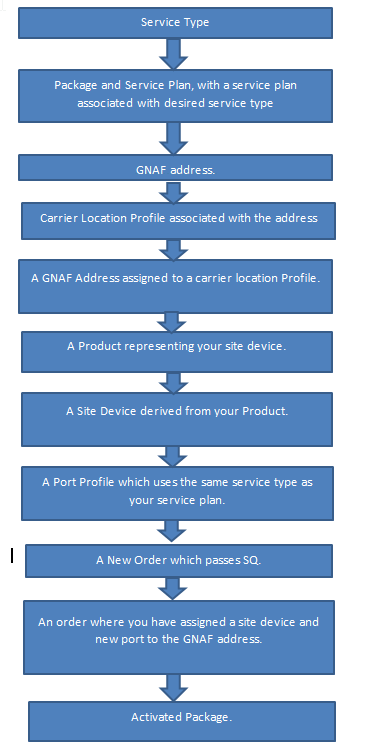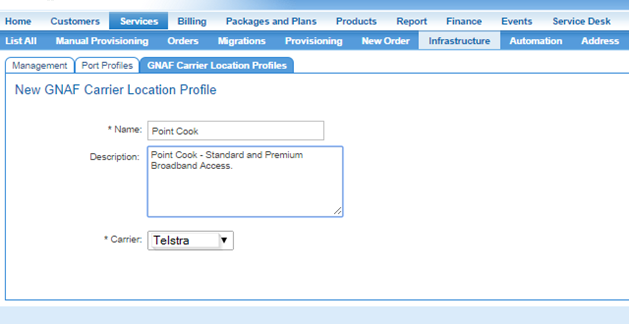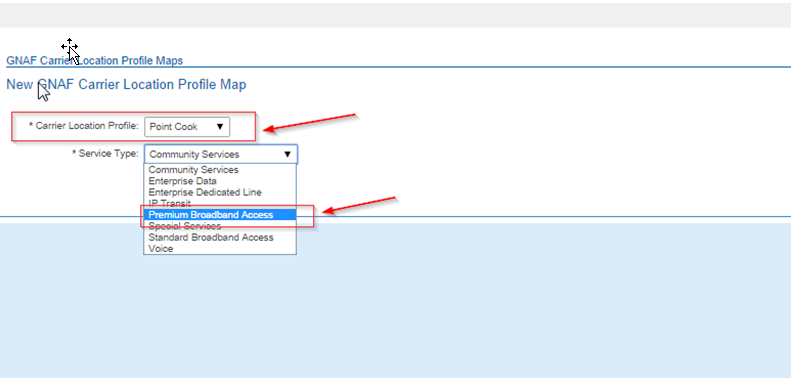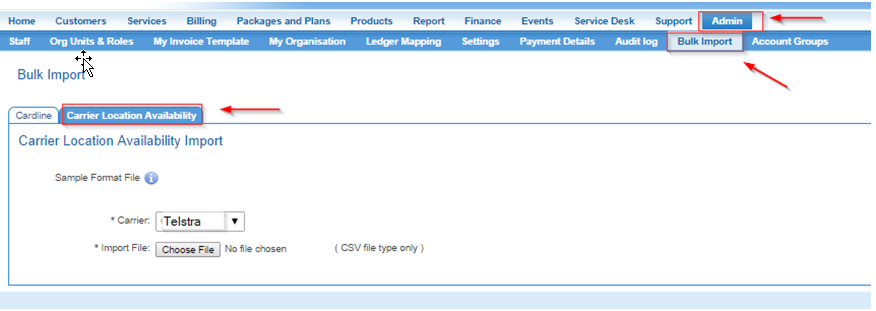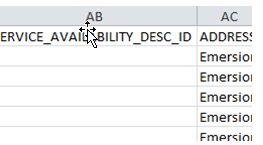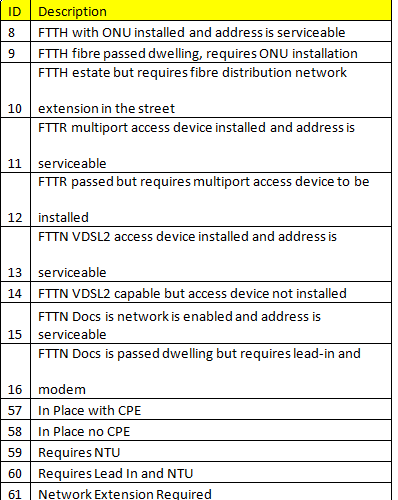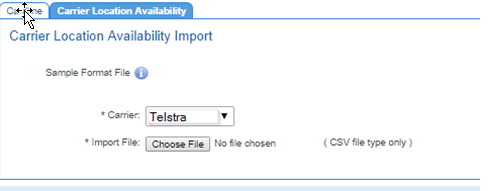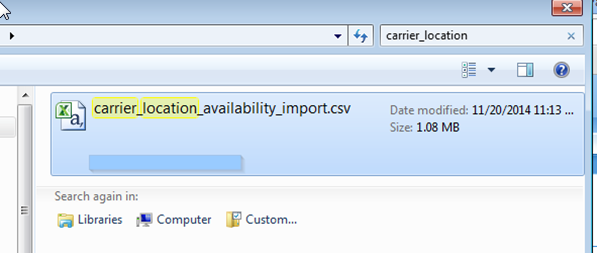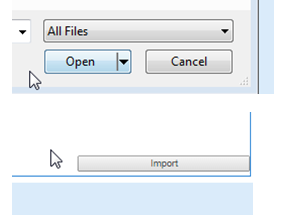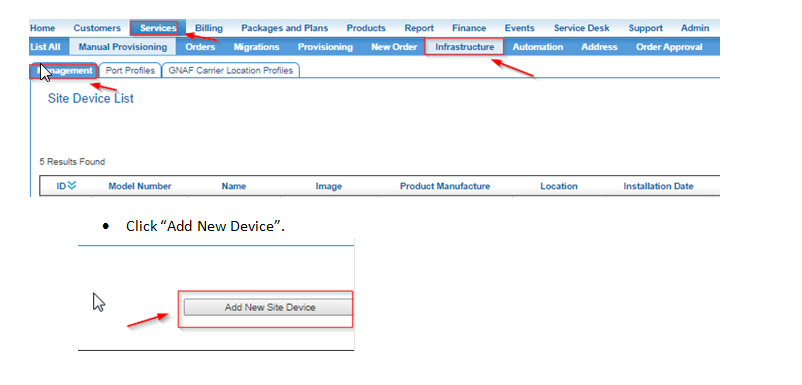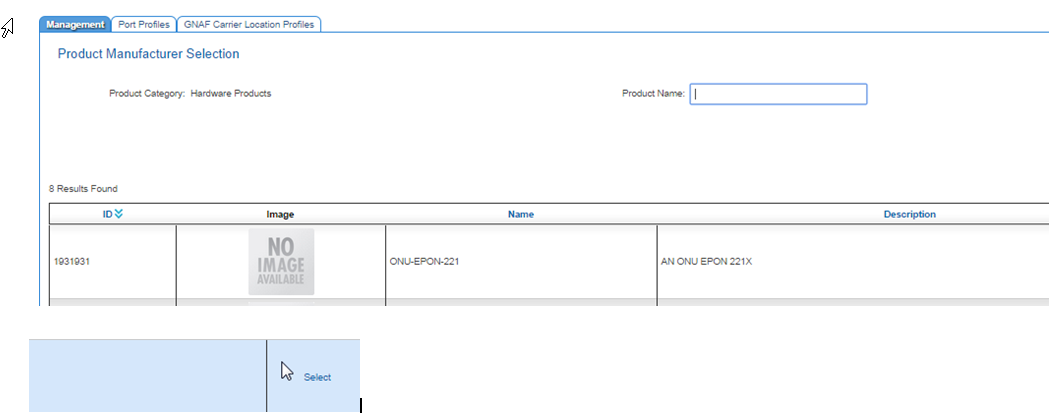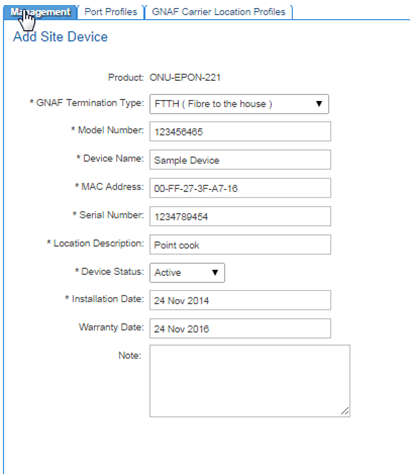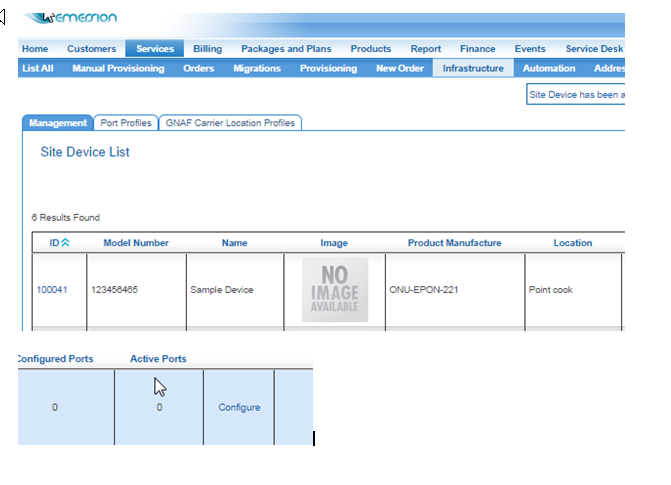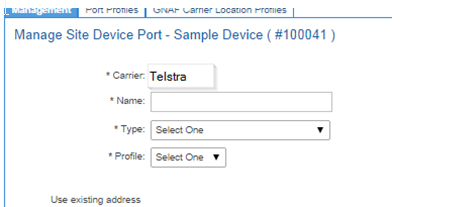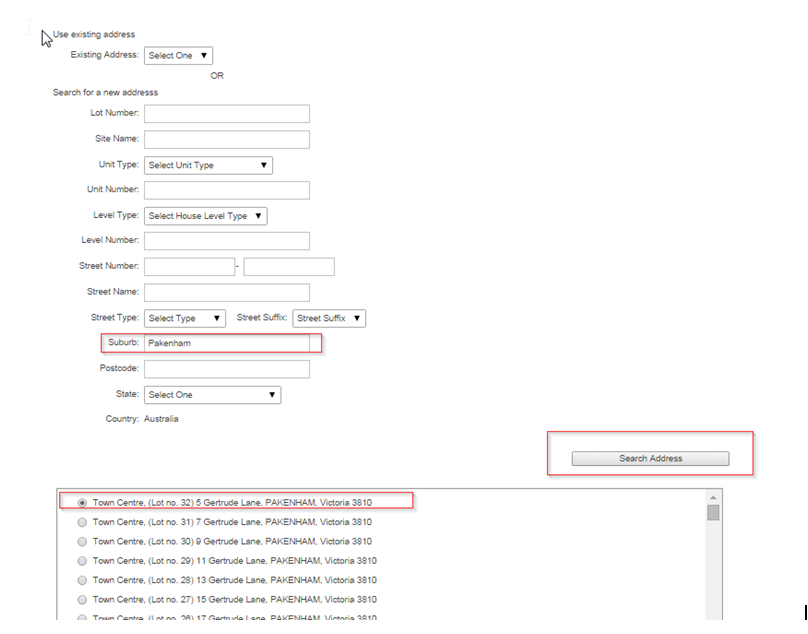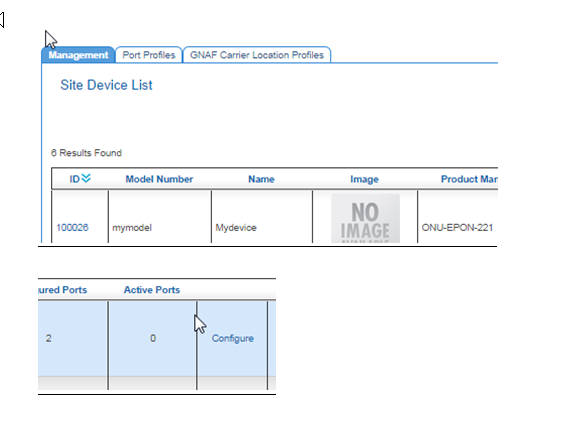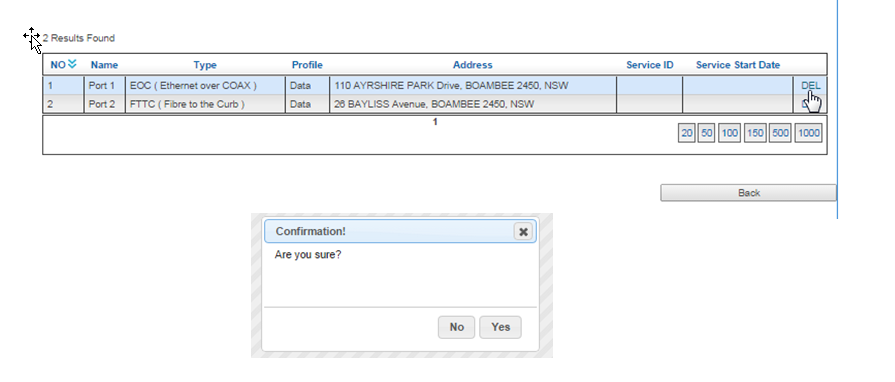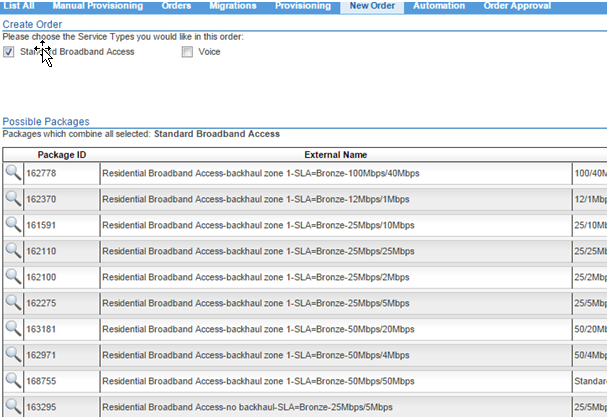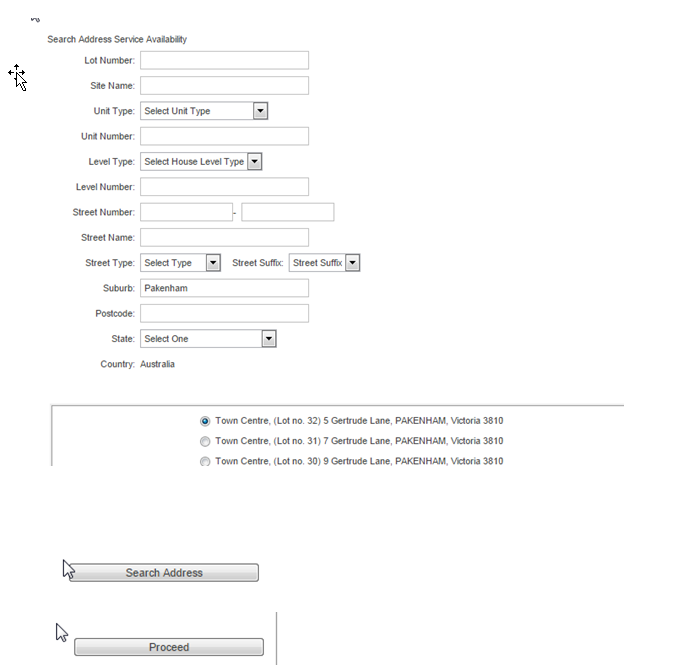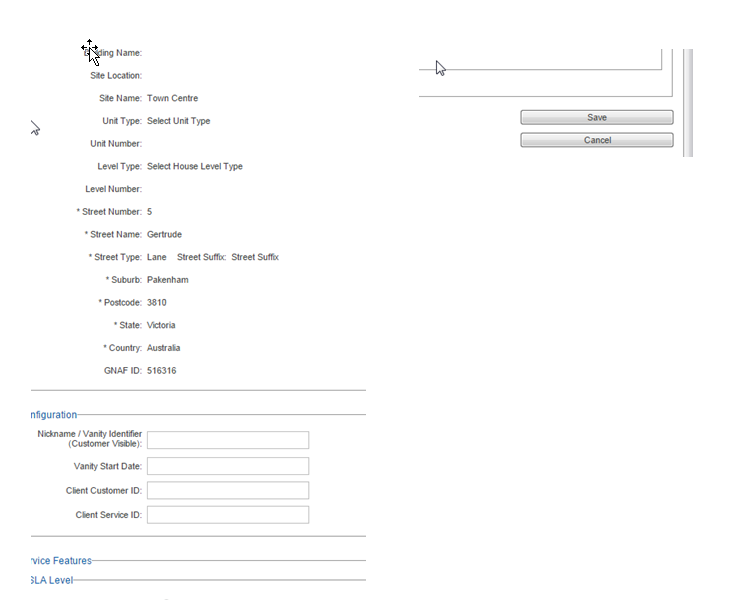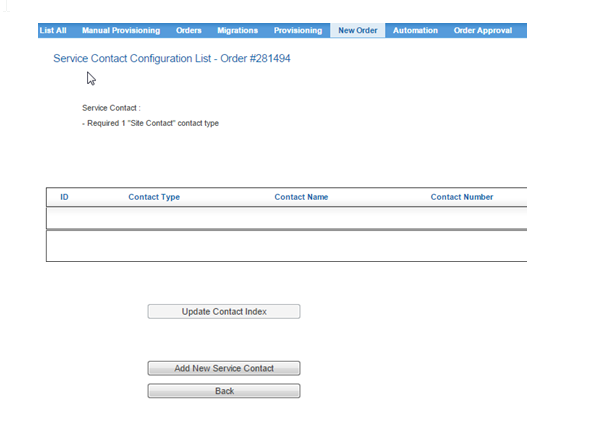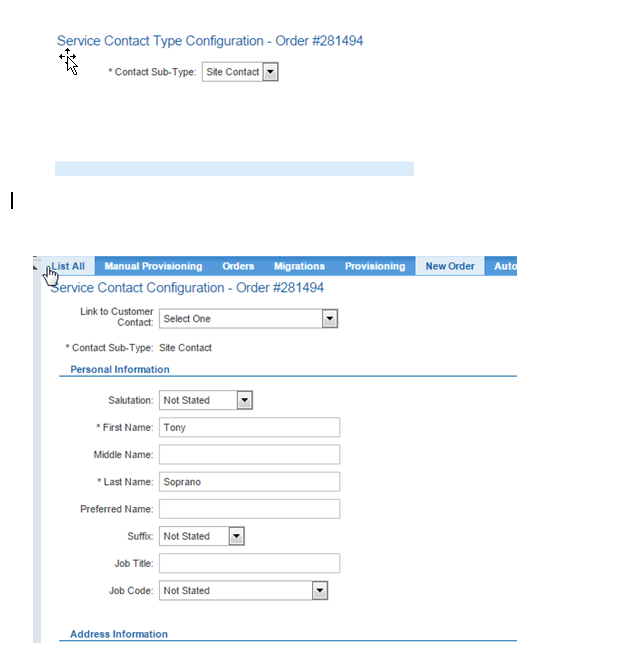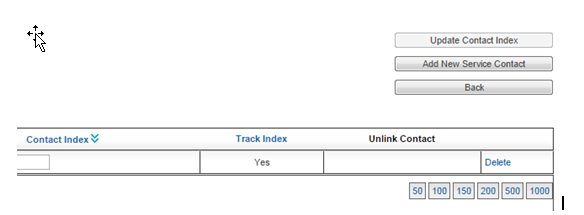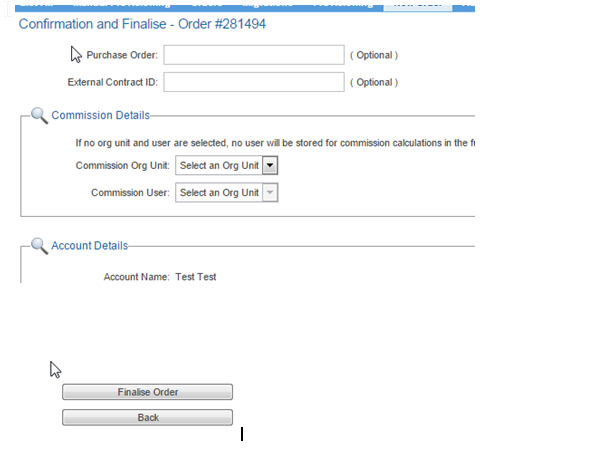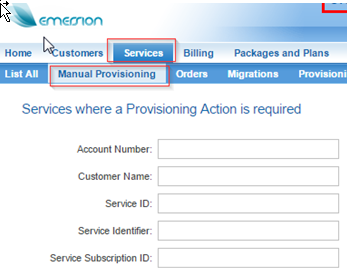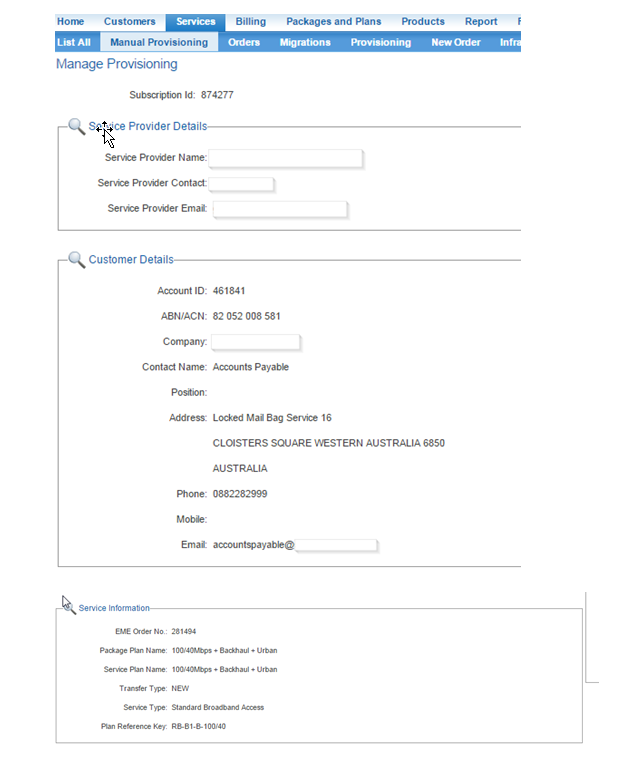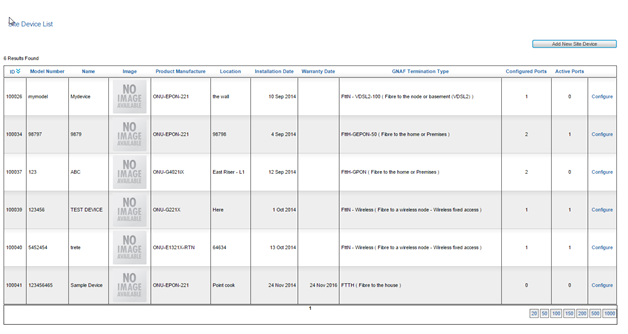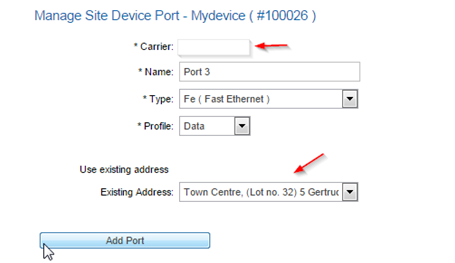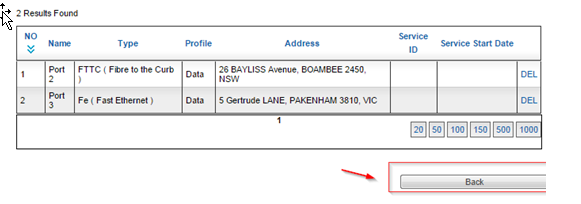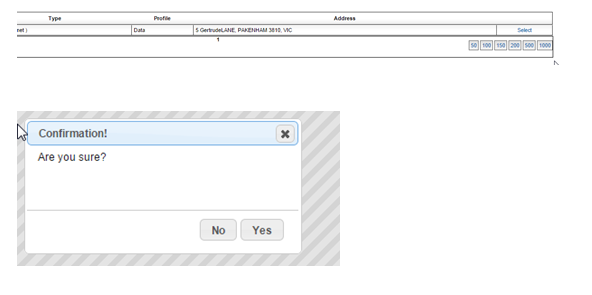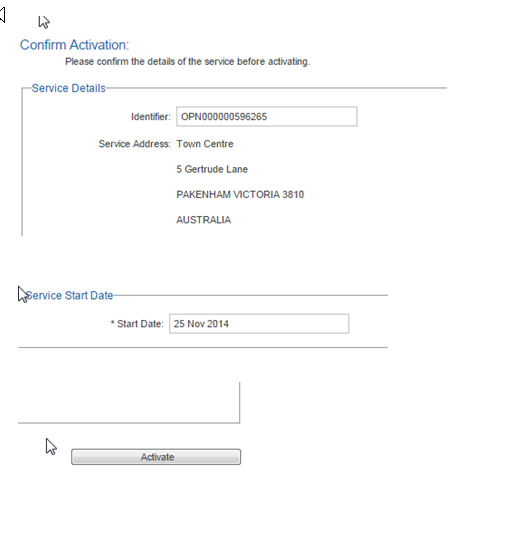Difference between revisions of "Main Page/Provisioning/GNAF Address Infrastructure"
From Emersion
(→Fundamental Concepts) |
(→How Carrier Locations, Devices and Ports work together) |
||
| Line 37: | Line 37: | ||
* If the address has a GNAF Location Profile ID and; | * If the address has a GNAF Location Profile ID and; | ||
| − | ** The service type of the service plan has a matching service type in the GNAF Location profile then; | + | ** The service type of the service plan has a matching service type in the GNAF Location profile and; |
| − | * The SQ will pass for the given address. | + | ** The service availability threshold of the address matches the minimum required for the account |
| + | then; | ||
| + | * The initial SQ will pass for the given address. | ||
**During the activation stage of manual provisioning, you will be permitted to choose a Device and Port for the given address. If the service type of the plan matches the service type of the port, you can assign the port. | **During the activation stage of manual provisioning, you will be permitted to choose a Device and Port for the given address. If the service type of the plan matches the service type of the port, you can assign the port. | ||
* If there is no port available, you may need to choose another device, port, or alternatively, you may need to reconfigure the port availability profile to indicate the desired service type is available for the desired device/port. | * If there is no port available, you may need to choose another device, port, or alternatively, you may need to reconfigure the port availability profile to indicate the desired service type is available for the desired device/port. | ||
| − | |||
| − | |||
== The Building Blocks and how they fit together == | == The Building Blocks and how they fit together == | ||
Revision as of 15:05, 3 December 2014
Contents
GNAF Instructure Overview
- With the introduction of the NBN, Wholesalers are increasingly rolling out their own network infrastructure as opposed to relying on an upstream party.
The Emersion system has now been enhanced to permit the storage of network infrastructure details for a given carrier within an Emersion.
- This permits a given Wholesaler/Carrier to roll out their infrastructure to given addresses and store that information with Emersion. They can also use this same information to place an order and perform a service qualification.
- Cumulus will also assist with the management of network infrastructure. For instance, you can assign a port on a network device to a given address, and keep track of what ports have been assigned to which addresses.
Fundamental Concepts
- With the introduction of the NBN, Wholesalers are increasingly rolling out their own network infrastructure as opposed to relying on an upstream party.
- The Emersion system has now been enhanced to permit the storage of network infrastructure details for a given carrier within an Emersion.
- This permits a given Wholesaler/Carrier to roll out their infrastructure to given addresses and store that information with Emersion. They can also use this same information to place an order and perform a service qualification.
- Cumulus will also assist with the management of network infrastructure. For instance, you can assign a port on a network device to a given address, and keep track of what ports have been assigned to which addresses.
The picture below discusses the initial building blocks to ensure an initial SQ will pass.
- A GNAF address is as the name would suggest, an Australian residential ,business, or government address.
- The carrier location availability indicates whether the carrier is going to service a given address.
- The GNAF Carrier Location Profile tells the system what service types are available for the given address and the given carrier. This is important as when you perform a Service Qualification for a given address, this layer is needed to tell the system what service types are available for the address.
- The service availability indicates how much infrastructure is already in place via the Class Number. Even though all the infrastructure is not in place at a given address, A carrier may elect to allow a Service Qualification to pass. The class number is an indicator as to how "ready" the site is to accomodate a service.
- If a provider has stricter thresholds and requires a mandatory level of service availability to pass SQ, a default level can be set for the account.
- A Site Device is a given piece of network infrastructure that has been installed by the carrier. A site device can have more than one port. A port availability record can be assigned to a GNAF Address. The structure below highlights that more than site device, could service a given GNAF Address.
- Each Port will also have a Port Profile. A Port Profile indicates what service types are associated with a Port. The reason for this is that when you assign a Port to a given address, it needs to know which ports should be made available. That is to say, the service type against the service plan must match the service type against the port.
How Carrier Locations, Devices and Ports work together
- If the address has a GNAF Location Profile ID and;
- The service type of the service plan has a matching service type in the GNAF Location profile and;
- The service availability threshold of the address matches the minimum required for the account
then;
- The initial SQ will pass for the given address.
- During the activation stage of manual provisioning, you will be permitted to choose a Device and Port for the given address. If the service type of the plan matches the service type of the port, you can assign the port.
- If there is no port available, you may need to choose another device, port, or alternatively, you may need to reconfigure the port availability profile to indicate the desired service type is available for the desired device/port.
The Building Blocks and how they fit together
- To get to the end point of assigning a device and port to a GNAF address, and an active package subscription for billing you will need in general terms as pictured.
Creating basic data about existing infrastructure/availability
Creating a new Carrier Location Profile
- First navigate to Services -> Infrastructure -> GNAF Location Profiles
- Click Create New
- Give your Location Profile a name and a description.
- After this you will need to indicate what service types are available for this location profile, via the Carrier Location Profile Maps.
- Go to the GNAF Carrier Location Profile Edit Page. Once you create a new profile you will automatically be redirected to this page. Click Create New to begin assigning a service type.
- Choose your carrier location profile and service type, click save.
How to assign a Location Profile ID to an existing address.
- This section is for existing addresses only, if you need to add a new address, this is addressed separately. This functionality is currently under review
- Navigate to Admin -> Bulk Import -> Carrier Location Availability.
- Download a copy of the import spreadsheet format.
- Alternatively, you may download a spreadsheet of your existing addresses in the database.
- In the spreadsheet, fill out the Carrier Location Profile ID, and the service availability Description ID.
- The Carrier Location Profile ID can be found in the UI as previously described. The current availability descriptions, and their ID’s are listed here:
- Once you have completed the spreadsheet, save it locally to your Pc or network drive. Select “Choose File”
- Find your file, click open and choose Import.
How to modify availability for a given service address
- You can use the same import tool where you added a profile ID to remove a profile ID, or change the carrier location profile ID.
- Follow the same steps as described in the import in the previous section. In the import sheet you can update the carrier location profile ID and service availability desc ID. If you do not want to have this available at all, simply leave both of these fields blank.
How to create a new device
- Go to Services - > Infrastructure -> and click Add new Site Device
- Find your Product in your product list and click select. If it’s not here, then you will need to create it first. Refer to the Emersion user manuals for advice on this.
- Fill out the various attributes of the Device. Note that if the device is not active you will be restricted from assigning ports and devices to the address.
- Once you are done click submit.
How to add a port to a device.
- Please note, at this time you cannot set a hard limit on the number of ports on a device. You also cannot create a port unallocated to an address.
- You can add a port to a device through the semi manual provisioning page (more on this later), or device management.
- To add through device management, go to Services > Infrastructure > Management > Configure Link.
- Describe the port, assign a type and a port profile.
- Use the existing address against the port if already assigned, or search for a new address.
- Once you have found a desired address, click add port.
- Note that this in of itself will not start billing and it will not assign the port to an actual service associated and begin billing. It simply assigns the port to an address. Later on when you place orders you can assign a the port to the actual service.
Deleting a Port on a Device
- Go to Services -> Infrastructure -> Management -> Then Click Configure next your site device.
- to the right you will have a list of ports.
- Click DEL on the desired port. You will additionally see a confirmation dialogue.
- The port will be deleted and deallocated from the GNAF address.
The Ordering Process
- Go to Services - > New Order.
- As with any with any order, you will see a preview package of orders.
- The next stage is the SQ. If your GNAF address has been been associated with Carrier Location Profile, it should pass this stage.
- Click enter SQ details, Enter various search criteria for the address and click search address, choose an address from the radio button and hit proceed.
- A list of packages will be listed. What is listed here will depend on the service types mapped to the relevant carrier location profile, and the matching service type on the service plan. Select the desired package.
- Choose the desired account in the next step of the wizard.
- At the next stage of the order you will be required to configure details against the broadband access service type. You may also be required to configure a service contact depending on the service type.
- Configure details for the service and any features and click save.
- Depending on the service type you may be required to add a new site contact.
- Add Contact Sub Type and contact details and save.
- You will see a confirmation screen, if you are happy click “back” to go back to configuration screen and also retain the newly saved/created contact.
- On the confirmation and finalise page click “Finalise Order” when you are ready.
- From here you will need to go to manual provisioning to activate this service. This is normally done at wholesale account level.
- Go to Services -> Manual Provisioning to find a list of services awaiting activation.
- Click the Activate Button against the desired service:
- The confirmation page lists extensive details about the service.
- If a Port is not already assigned to the address, you will likely see an "Add Site Device" button this screen. Click Add Site Device.
- The first section of this screen will give you a list of available devices. Please note it will show all devices, regardless of their actual proximity to the site address in question.
- At this point you have two options. You can “Configure” an existing device, to create a port against an existing device and assign it to the address.
- Alternatively you may add a new device.
- To add a new device click add new site device.
- Refer to the “add new device” section on adding devices as the UI is identical in this instance.
- To configure an existing device click configure in the Available Device List.
- Create a new port and assign it to the existing address you have provisioned the service against, then click Add Port.
- Once you have added your port, click “Back”. Your changes will be retained, so these will not be lost.
- You will go back to the device list page, click the big X at the top right hand corner, don’t’ worry, your changes will still be saved.
- In the order details page, instead of seeing a link that says "Add Device", you will see instead "Add Service Port". This is used to confirm the service address assigned to the port.
- Select desired address in this page and click select. Click Yes on the confirmation page when you are ready.
- After confirmation, the "Activate" button will become available at the bottom of the page. It will take you to one last confirmation page, where you should set an appropriate start date, then click Activate again.
